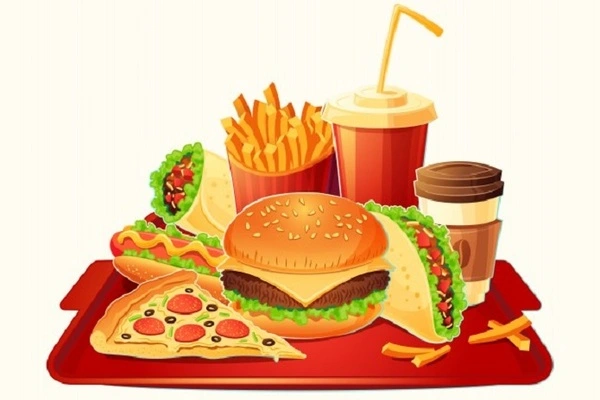To improve the taste of processed foods, extra salt, fat, and sugar are frequently added. This has harmed children’s health by increasing the prevalence of obesity, diabetes, high blood pressure, and other health issues. Childhood obesity is currently a big public health problem in the United States. Making healthy eating choices for your family is critical.
According to a new study, children aged 3 to 5 who ate more ultraprocessed meals had weaker locomotor skills than children who ate less of these foods. It also found that 12- to 15-year-olds who ate more ultraprocessed foods had lower cardiovascular fitness.
Although prior research has linked ultraprocessed meals to an increased risk of cardiovascular disease in adults, this is one of the first studies to indicate a link between intake of these foods and lower levels of physical fitness in children.
This study defined ultraprocessed foods as packaged snacks, breakfast cereals, candy, soda, sweetened juices and yogurts, canned soups, and prepared foods such as pizza, hotdogs, burgers, and chicken nuggets.
Healthy eating and physical activity habits are formed at a very young age. Our findings highlight the importance of educating families about cost-effective measures to limit ultraprocessed food intake in order to lessen the risk of cardiovascular disease in adulthood.
Jacqueline Vernarelli
“Healthy eating and physical activity habits are formed at a very young age,” said Jacqueline Vernarelli, PhD, associate professor and head of the Master of Public Health program at Sacred Heart University. “Our findings highlight the importance of educating families about cost-effective measures to limit ultraprocessed food intake in order to lessen the risk of cardiovascular disease in adulthood.”
Vernarelli will present the findings online at NUTRITION 2022 LIVE ONLINE, the flagship annual meeting of the American Society for Nutrition held June 14-16. To examine the association between physical fitness and ultraprocessed foods during various stages of childhood, the researchers analyzed data from the National Health and Nutrition Examination Survey (NHANES) National Youth Fitness Survey.
This 2012 survey used interviews and fitness tests to collect data on physical activity, fitness levels and food intake for more than 1,500 U.S. children aged 3 to 15. Ultra-processed foods were identified using NOVA, which categorizes food and beverage items according to the level of food processing.

Any food that has been altered during preparation to make it more convenient, shelf-stable, or delicious is considered processed. Some foods are far more processed than others. Although a bagged salad or pre-cut green beans are technically processed, they are just minimally processed because their natural form has not changed. In other words, it appears to be the same as it would in nature. A package of macaroni and cheese or a microwaveable supper, on the other hand, are severely processed (also known as ultra processed) because they have been chemically altered with artificial flavors, additives, and other components.
The researchers utilized locomotor development as a measure of physical fitness for children aged 5 and under. The investigation found that children with the lowest locomotor development scores consumed 273 calories more per day of ultraprocessed foods than children with the greatest locomotor development scores.
Cardiovascular fitness was employed as a physical fitness metric in older children. The study found that teens and preteens with strong cardiovascular fitness consumed 226 less calories per day from ultraprocessed foods than those with poor cardiovascular fitness.
“While highly processed convenience foods are convenient to pack in a school bag, our research emphasizes the necessity of preparing nutritious snacks and meals,” Vernarelli added. “Think of it like retirement planning: You’re making decisions now that will affect your child’s future.”
The researchers intend to investigate ultraprocessed food intake patterns by age group as a following step. For example, do children consume more of these meals at breakfast, lunch, or snack time? A deeper understanding of how and when certain foods are consumed could aid in the development of future treatments to promote healthy eating.
















